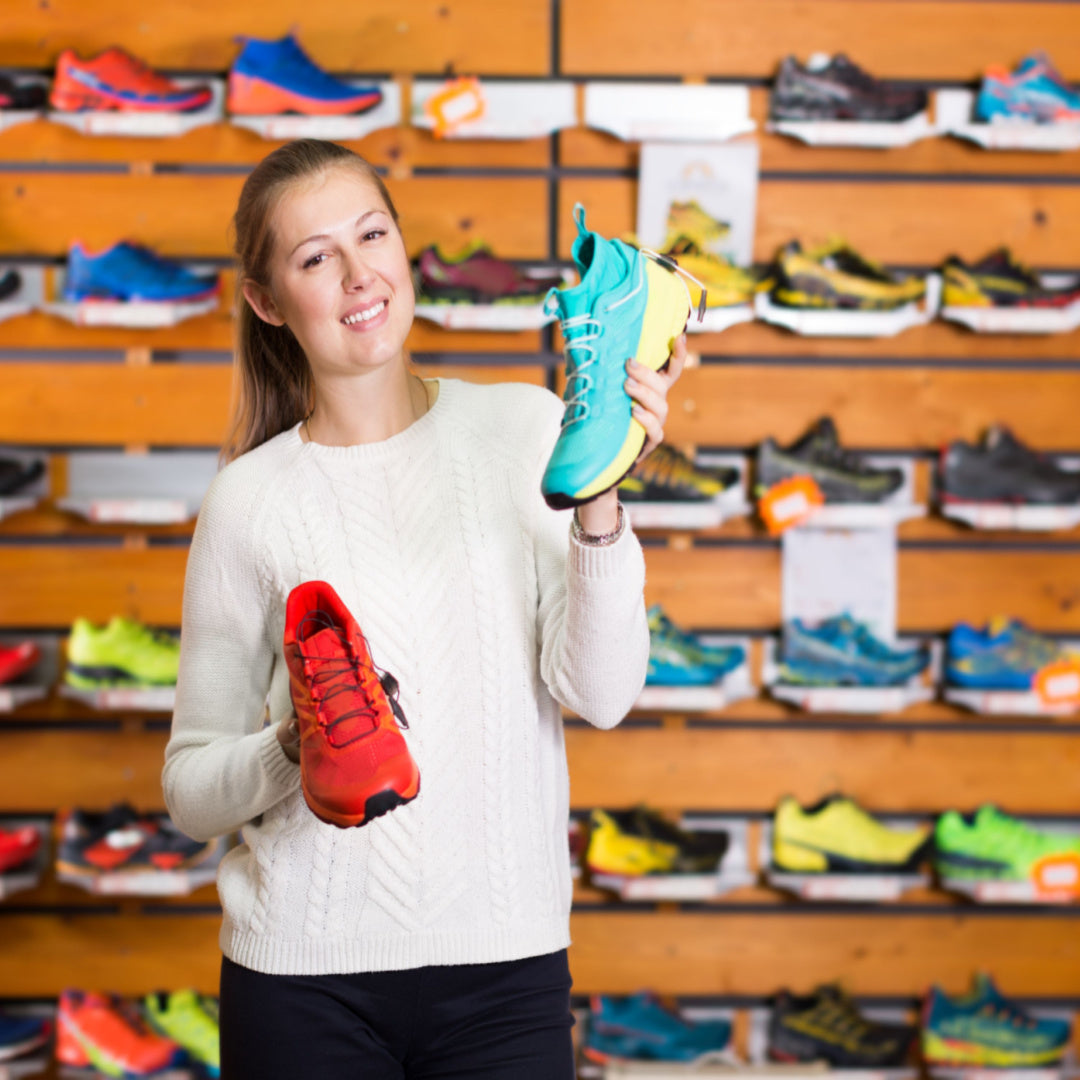If you are into fitness and working out is your idea of having a productive and positive day, then you definitely know the importance of wearing the right fitness gear complimenting your activity and adding to your comfort while you are at it. Wrongly fitted and tight shoes can lead to shoe-bites or blisters which can be a great cause of discomfort and pain.

The adverse effects of wearing footwear unsuitable for a particular activity should not be understated. It can wreck irreversible damage on your joints and cause chronic pain and inflammation. The right shoe will support your foot and the surrounding muscles the right way according to the activity that the foot is performing and it is only fair that your foot gets the deserved attention as it the most important part of your body making contact with the ground while doing any workout.
This is why having a shoe fetish can be a good thing when you are into hitting the gym and making every drop of sweat count is your thing.
Walking shoes - an absolute must
Everyone deserves a comfortable pair of walking shoes that adds to the much-needed comfort to an activity that suits most of our routines. While choosing walking shoes, look for ones that offer a soft upper part, rocker soles, good shock absorption and a smooth tread. A pair of shoes that encourage the natural roll of the feet is ideal.
Running shoes - It’s all about cushioning and stability

If you are into clocking in the miles, having a pair of running shoes that are designed to help you keep your momentum and double up as shock absorbers is important. Running shoes are designed to absorb shock at the heels, reducing the likelihood of stress related injuries due to overuse. The front of the shoe is designed to be firm so that you don’t feel like you are pushing off loose sand. This stability offered by these shoes considerably reduce the risk of a rolled ankle and related injuries.
Getting a consultation from an expert to zero in on the right fit for you is also of prime importance. An expert will pay attention to your gait and stride while making sure you don’t choose a shoe that is too-tight around the forefoot that may lead to nasty and painful blisters or one that has a slipping heel which may lead to rashes around the heel area.

Cross-training shoes – The most versatile.
It is wise to invest in a good pair of cross-training shoes as they can function reasonably well for pretty much all kinds of workouts. They offer good stability that can help in comfortable foot movement in all directions while also not being too squishy which makes it ideal for lifting weights. These shoes are also not too rigid or firm which means it also fits the bill for running.
Weight-lifting shoes – for balance and stability
Weight lifting shoes are specifically designed for that which means they have firm and flat soles slightly wider at the bottom which goes a long way to offer that extra stability while lifting. They keep you as close to the floor as possible and the soles help you to transfer all the effort of your muscles through the ground. Imagine wearing cushioned running shoes while lifting weights. The hard work of your muscles, some of it, will be absorbed by the cushions making lifting a little more difficult than it should be.
Shoes for the court – If you are into basketball, football or badminton, you need to choose shoes appropriate for use inside a court. Court shoes have specially designed soles to facilitate comfortable movement forward, backward and side-to-side. The soles are also specially designed depending on the game/activity. They range from cleated, studded or spiked shoes for soccer, football, rugby or non-marking shoes for a badminton court.
What to look for in your shoe?

- Go for shoes that have enough room for toes and the heels. Tight shoes can lead to shoe-bites or blisters which can be very painful.
- Choose a shoe made with fabric that breathes when your feet sweat.
- Make sure the heels don’t slip. A slipping heel could lead to uncomfortable workouts, rashes and even accidents.
- Select shoes that stretch a little. These shoes will adjust to the shape of your feet and will be most comfortable.
- Avoid shoes having inseams as these can irritate skin due to friction.
- Ensure that you try on shoes while standing and wearing your usual type of socks so that you can choose one with the perfect fit.
- Wear a barrier gel before putting on your shoe for a workout as these gels can reduce friction and prevent shoe-bites.
Remember to replace worn-out shoes on time and remember that comfortable footwear chosen with care, keeping in mind the purpose, can make all the difference and help you stay injury-free and enjoy your activities/workouts.





